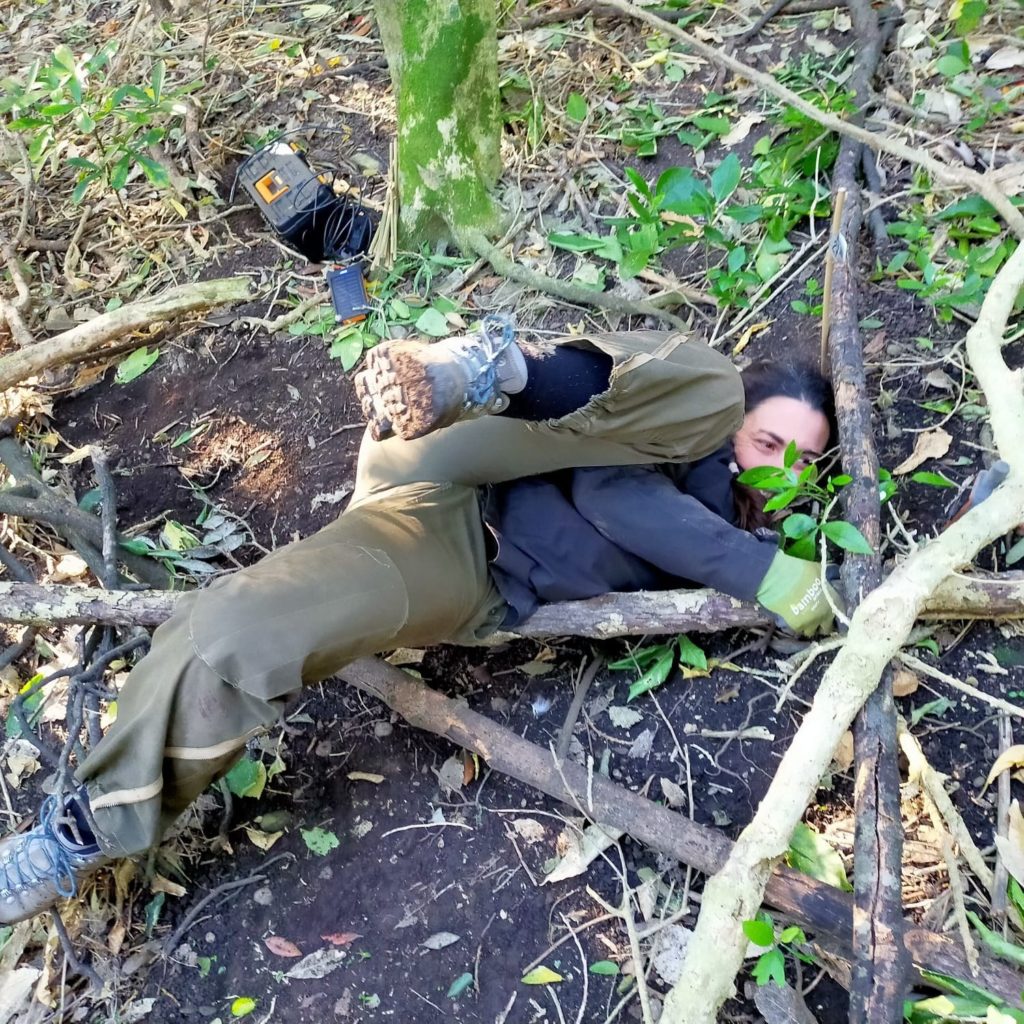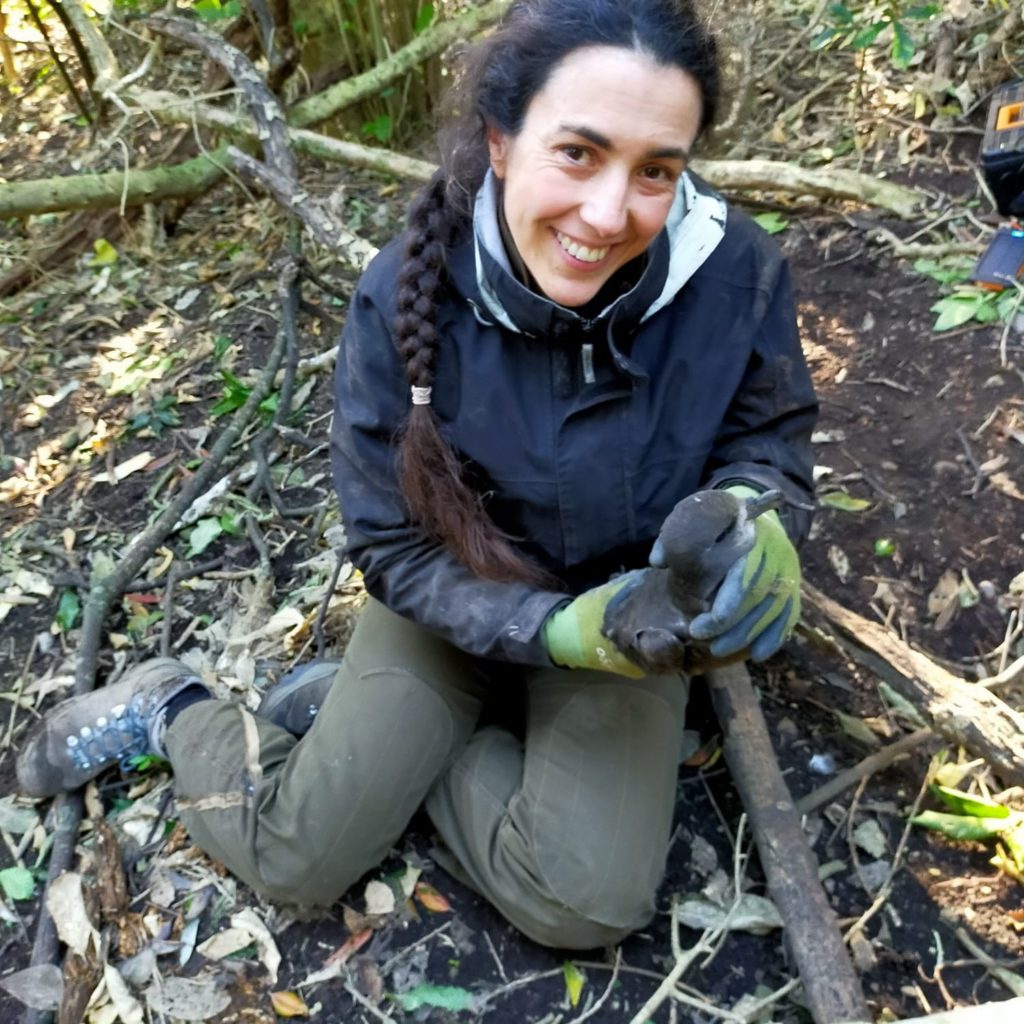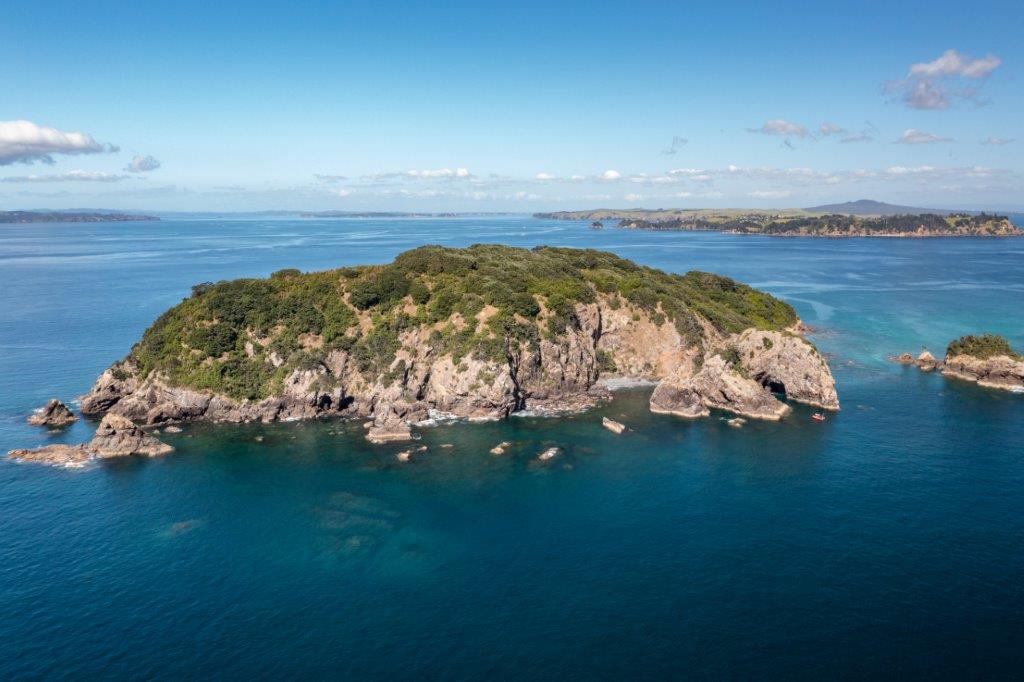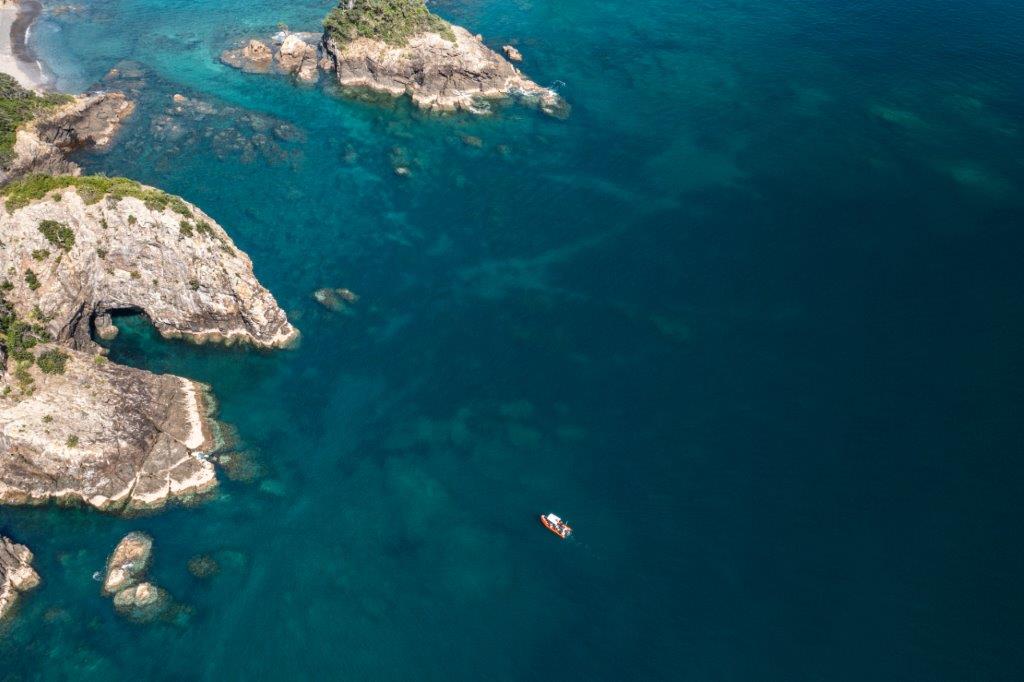The Noises hold a very special interest for seabird lovers. Being home to at least…
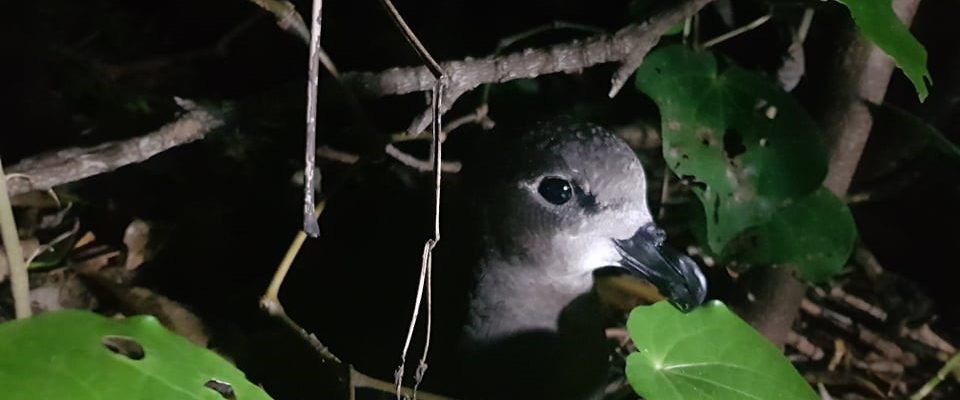
Long-term commitment to seabird surveys
When Auckland Council agreed to support a significant multi-year monitoring programme of seabirds on The Noises, The Noises Trust was delighted, because ecological surveys of this nature are an essential tool for assessing overall ecosystem health.
Leading this ambitious study is Dr Gaia Dell’Ariccia, a seasoned seabird scientist with Auckland Council’s Environmental Research and Evaluation Unit, (RIMU) and she is full of enthusiasm for the project. “This is the first programme of its kind for seabirds at a regional level and it is wonderful that Auckland Council has made this money available for protection and monitoring.”
These ongoing studies will be vital in ascertaining whether seabird populations are degrading, remaining stable, or increasing with funds for the work coming from the Natural Environment Targeted Rate (NETR). “This fund was originally approved for 10 years, but it has since had three more years added to it, and hopefully that will keep expanding and the surveys can be extended with it.” This is important as many seabird species are long lived and often don’t start breeding until they are at least four years old.
There are at least 15 nationally threatened and at-risk bird species recorded on or around The Noises, making for the highest seabird diversity of any islands in the inner Gulf. But to date, most of the seabird research carried out on The Noises has been limited to occasional studies conducted by students, largely on Ōtata Island and to a lesser degree on Ruapuke/Maria Island, although those studies don’t provide long- term tracking. “We did have a rough idea of where to find burrows, and we also had data from a couple of previous studies about how many burrows had chicks inside but, because monitoring was not continuous and burrows weren’t marked, that didn’t give a clear story of the birds.”
In order to start creating that clear story, the inaugural field trip to collect baseline data was booked for four days in the second week of August and, in spite of chilly days and even chillier nights, not to mention a fair bit of wind, the intrepid researchers spotted a break in the weather and were able to conduct the first in this series of surveys. In a stroke of good luck, they also managed to achieve this just days before the entire country went into lockdown following another outbreak of Covid.
Joining the well-timed expedition were Zoe, Sue and Rod Neureuter along with PhD student Michael Fox who were on hand to assist Gaia. “During the first trip, we located 80 burrows on Ōtata Island for long-term regular monitoring. These are in five selected areas and we marked all the burrows we found. In those burrows, we found 52 grey-faced petrels, 14 little penguins, 12 were empty and two were probably empty but they were too deep to be sure we had reached the bottom, even with the burrow scope. And at night, we managed to capture and band 14 petrels,” Gaia reported.
Passionately committed to conservation, Gaia is the sort of scientist who always goes that extra mile, as these photos can attest.
“Even though we were gloved and beak wary, several of us received a few pecks for our troubles, and as Zoe can tell you, and it was bloody cold too. But it was also great to learn from someone like Gaia,” Sue added.
With the first survey completed, Gaia anticipates taking teams out several times each year because different species have different breeding times. “The aim of the August trip was to check for burrow occupancy for grey-faced petrels and little penguins via the presence of eggs. Later, we will return to check for fledging chicks and gauge breeding success. We are also hoping to go out to Ruapuke/Maria Island, to monitor the burrows of white-faced storm petrels and make extensive captures at night for banding in the last week of September, or perhaps early October depending on Covid restrictions. Then we will return at the end of January or the beginning of February to check those burrows for chicks. Because we want to learn about the presence and general status of all birds, we are looking at a range of different species, to monitor everything we find and determine what is breeding out there.
As a rule, petrels lay one egg per year, while penguins might lay two and sometimes even multiple clutches in a single season. So, as well as determining breeding success, Gaia will also be interested to learn if the birds keep to their burrows because, while most birds return to the same burrows year after year, penguins and petrels have been known to switch and Gaia will be curious to see if they do this here. “With time,” Gaia continues, “this long-term approach will allow us to study population health dynamics and survival and, if we’re lucky, the fledged chicks will come back to breed.”
Gaia has also come up with an innovative, eco-friendly way of marking the burrows with tags made from used aluminium cans. “We need to mark the burrows, so they are recognisable when we return. This is generally done using plastic flagging tape, which isn’t permanent and with wind and weather, it can end up flying around the colony and ultimately out to sea. So I looked for a low-impact alternative and I made these tags using little bamboo sticks in the ground, and the flag is made from aluminium cans, upcycled from my colleagues. These have a longer life than flagging tape, and because I engrave the numbers, they cannot be erased with rain or sun.”
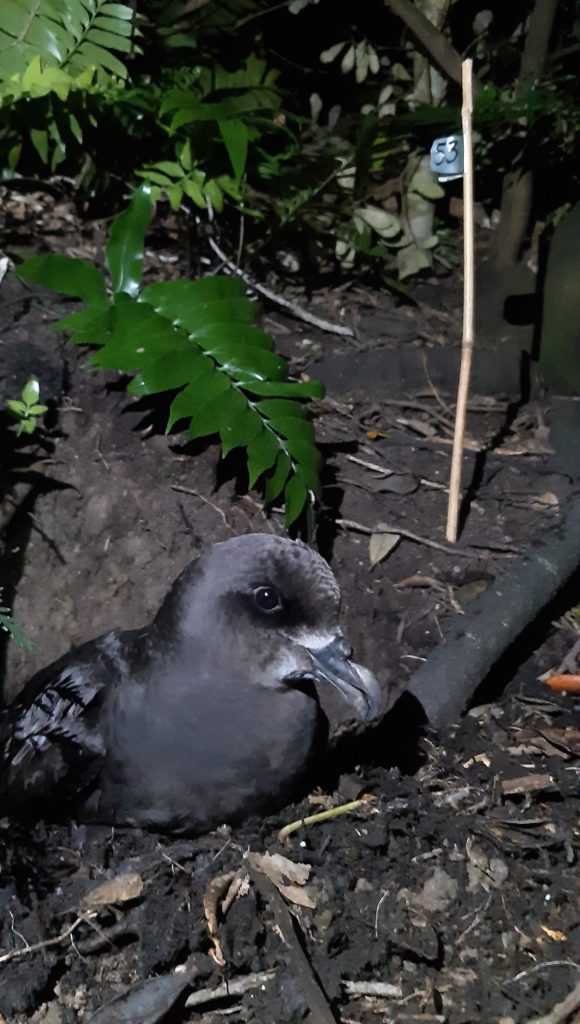
For now at least, 80 burrows have ID numbers and at the end of each breeding season, each burrow will be checked for chicks, captured birds can be banded and recognisable individuals will provide more detailed information .“Petrels, for example, are monogamous. Always the same pair, always the same burrow. Year after year they migrate, they go away and return to the same partner and burrow which is amazing. Monitoring this can give us some insight into population structure and if things are going as they should. But if the birds are changing, we’ll know there is some trouble somewhere, and that’s why the study was set up.”
During the August survey, Dr Matt Rayner – Auckland Museum’s curator of land invertebrates – also stopped by with seven nest boxes for fluttering shearwaters, because Auckland Museum is actively collaborating with the seabird surveys, as well as leading many of the terrestrial programmes. “Although the different studies have differing funding, we will get the best results by working together. Dr Todd J. Landers [senior scientist at RIMU] is also working on the regional seabird survey and together we installed the nest boxes in the north-east corner of the island.”
At this early stage, it’s hard to say what the state of seabird health might be, but overall Gaia is optimistic. “Because the Neureuter family know the islands so well, and because they thought at this stage of the season numbers were healthy, I was also happy. We found 80% of burrows occupied, but I also don’t know if it is usually 80%, or 70% or maybe 90%, and we will only find out after many years of monitoring and frequent survey repetition. Today this is just a number, but over time, the meaning will become clearer.”
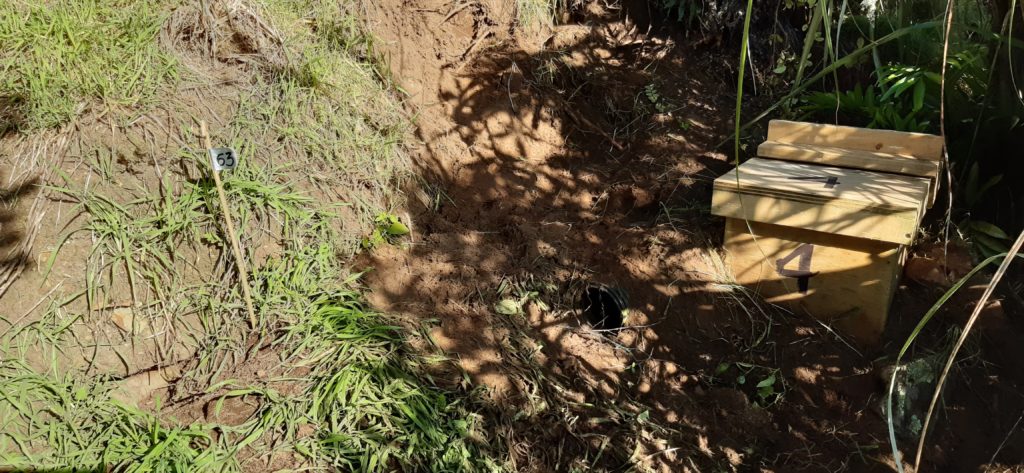
Thank you to Auckland Council, and to all those who have participated in the work so far.

